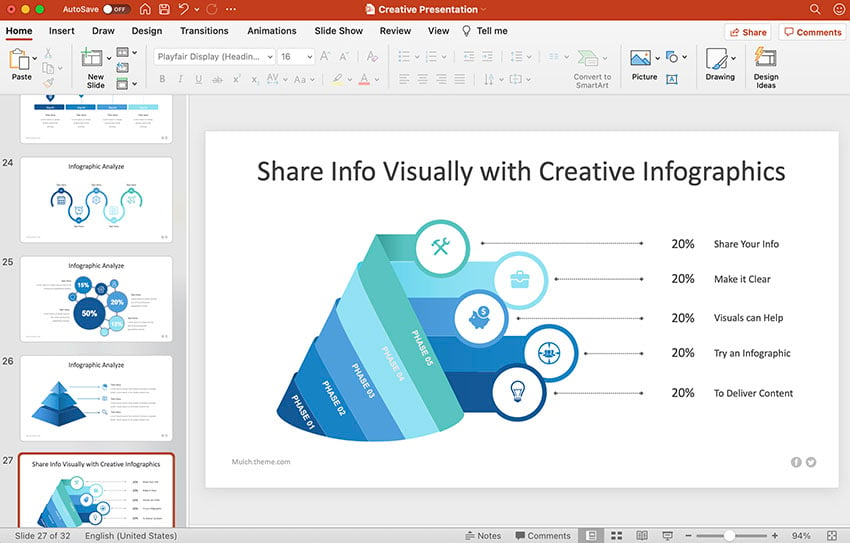
Content marketing is a strategic approach that creates and distributes content that is valuable, relevant, and consistent to attract an audience with the goal of driving profitable customer action.
When it comes to your business, you likely already understand what content marketing is (or at least, you should). After all, without quality content, you’ll have nothing to distribute!
But what happens after you produce that quality content? What’s your strategy for getting it in front of your customers?
Developing documented content marketing strategies is key to ensuring that your content reaches your target audience. And when we say “strategy,” we don’t just mean throwing a few blog posts up on your website and hoping for the best. Successful content marketing strategies require planning, execution, and measurement.
When executed correctly, content marketing can provide your brand with an ongoing stream of original, high-quality content that will attract new visitors, build trust and credibility, boost engagement and loyalty, and drive conversions.
Azarian Growth Agency has prepared a comprehensive guide to help you develop a digital content marketing strategy that will work for your business. We are happy to share our expertise and experience with you!
Content Is King, but Only with a Strategy

In the business world, content is king. Too often, however, companies invest heavily in content production without developing clear content marketing strategies. As a result, they end up with a disorganized mess of content that does little to achieve their business goals.
The majority of companies, 84%, according to Semrush, have a content marketing strategy. So, if you don’t have that in place, you’re already behind the majority of your competitors.
An effective content strategy begins with a clear understanding of what the company wants to achieve and who its target audience is. From there, it should identify the specific types of content that will best achieve those goals and determine how that content will be distributed.
Only then can companies hope to create a cohesive and effective content marketing campaign. Even the best-written article will likely get lost in the shuffle without a strategy. And without a meticulous content plan, your company is much less likely to achieve its desired results.
What Should Be Included in Your Content Marketing Plan?
Before you begin creating content, it is important to have a plan in place. Your plan should include your goals for the content, your target audience, the types of content you will create, and a publication schedule.
By taking the time to develop a content marketing plan, you will be able to create a cohesive strategy that will help you achieve your business goals.
To start, consider what you hope to achieve with your content. Are you looking to increase brand awareness? Drive traffic to your website? Or maybe generate leads? Once you have identified your goals, you can begin creating content aligned with those objectives.
Next, think about who you are trying to reach with your content. What are their needs and interests? What type of tone would resonate with them? Answering these questions will help you create relevant and engaging content.
Once you have defined your audience and objectives, it’s time to start brainstorming ideas for your content. Will you be creating blog posts, infographics, videos, or e-books? Choose the formats that best fit your goals and audience.
Finally, put together a schedule for publishing your content. Consistency is vital when it comes to driving results with content marketing. By setting a publication schedule, you can ensure that your audience always has something new to consume.
5 Components of an Effective Content Marketing Strategy.

1. Know your readers
What are their pain points? What drives them? What kind of language do they use? By understanding your readers, you’ll be able to create content that speaks to them directly.
As new technologies emerge and new platforms become popular, you must ensure that your content keeps pace. By staying up-to-date with the latest trends, you can ensure that your content marketing strategies are always relevant.
2. Know the problem you solve with your content
An effective content marketing strategy must be built on understanding the problem your content solves. Otherwise, you run the risk of creating content that is irrelevant to your target audience or that fails to address their pain points.
The first step is to conduct market research and develop a deep understanding of your target audience. Once you know who you’re trying to reach and what problems they’re facing, you can start to develop a strategic plan for your content.
This plan should include defining your goals, determining what type of content will best solve your audience’s problems, and mapping out a distribution strategy that will ensure your content reaches them where they are.
3. Know your uniqueness
Every business is unique. Your content marketing strategies should be too. Knowing your USP (unique selling proposition) will differentiate you from the competition and clearly state what you offer that no one else does- or, at the very least, what you do better than anyone else. Figure out what makes your organization special and use that to inform all of your content marketing decisions.
4. Choose the right mix of content to meet your goals
You can use various types of content, and each has its strengths and weaknesses. For example, blog posts are great for building relationships with readers and providing valuable information, but they won’t help you much if your goal is to increase sales.
On the other hand, e-books and white papers can be very effective at generating leads, but they’re not as good at fostering relationships. The key is to choose the right mix of content to suit your particular goals. A good start is identifying the different types of content that will help you achieve your objectives. Then, take a close look at each one to see how it can best be used.
5. Monitor, measure, and adjust your content marketing strategy
If you’re not monitoring, measuring, and adjusting your content marketing strategies, you’re not doing it right. It’s essential to track your progress and performance to see what’s working and what’s not. You can make necessary adjustments to improve your results by monitoring your metrics.
Don’t be afraid to change course if something isn’t working. Successful content marketing strategies are constantly evolving, so make sure you’re continuously monitoring, measuring, and adjusting your approach. Only then can you ensure that your content has the desired effect.
Step 1. Create Buyer Personas and the Perfect Customer Journey Map for Your Business

Before creating content that resonates with your audience, you must understand who they are and what they want. That’s why developing buyer personas is an essential first step in any content marketing strategy. By definition, a buyer persona is the representation of your ideal customer based on accurate data about your existing customers.
Consider factors like age, gender, location, occupation, and interests when creating buyer personas. Once you clearly understand your target audience, you can start to map out their journey from awareness to conversion. What kind of content will they need at each sales funnel stage? What format will be most effective? By answering these questions, you can develop content marketing strategies to guide your decisions about what to create and where to distribute it.
Here are some examples of buyer personas:
The Busy Professional: This persona is always short on time. They’re looking for concise and concise content, so they can get the information they need quickly and move on.
The Skeptic: This persona is highly skeptical of any claims made by businesses. They need to see hard evidence before they’re convinced. Case studies, data-driven blog posts, and infographics are all effective ways to reach this persona.
The Hobbyist: This persona is passionate about their hobbies and interests. They’re always looking for new information to help them improve their skills. How-to guides, product reviews, and expert interviews are all great content formats for this persona.
A customer journey map is plotting out the steps your customer takes from awareness to purchase. This can help you understand the content most relevant at each stage of their journey and how you can best connect with them.
The stages of the customer journey include:

Awareness: The customer becomes aware of their problem or needs.
Consideration: The customer begins to research solutions to their problem or need.
Decision: The customer decides on a particular product or service to solve their problem or meet their need.
Purchase: The customer makes a purchase and becomes a customer.
Retention: The customer continues to use the product or service and may also become a brand advocate.
Advocacy: The customer promotes the product or service to others.
Keep in mind that not all customers will go through all of these stages; some may only make it to the purchase stage, while others may go to advocacy. The important thing is to understand what content is most relevant at each stage and how you can best connect with your customers.
Step 2. Get a Deeper Insight into What Works and Why

When developing killer content marketing strategies, deep research and analysis are your best friends. The first step is to look at your existing content and see what’s working and what’s not. Which pieces are getting the most traffic? What kind of engagement are they getting? Are there any common themes or topics that seem to perform well?
This data will give you a good starting point for understanding what content your customers are interested in and how they like to consume it. From there, you can experiment with different formats and strategies to see what works best.
Here are some deep research frameworks and tools you can use to get started:
The Content Marketing Pyramid: This framework, developed by Joe Pulizzi, helps you understand what content you need to create at each stage of the sales funnel.
BuzzSumo: This tool lets you see the most popular content across all social media platforms. This can help you understand what topics resonate with your audience and which formats are most popular.
LeadFWD: AI-driven, this software quickly analyzes your website to provide insights that will help improve lead generation and content creation.
Reddit: This social media platform is great for seeing what people are talking about in your industry. You can also find out what content is popular in specific subreddits related to your industry.
Answer the Public: This free tool generates questions people search for on Google related to a specific topic. This can help you understand what kind of content your audience is looking for and how to structure your content to address their needs.
Step 3. Quantify Your Content Marketing Success
To create a content marketing strategy, it’s essential to track your progress and measure your results. This is especially true for content marketing, as it can be challenging to see the immediate impact of your work. However, by tracking key metrics, you can better understand what’s working and what needs improvement.

Content Marketing Metrics
- Engagement rate
It measures how often your audience interacts with your content, and it can give you invaluable insights into what’s working and what’s not.
- Bounce rate
It measures how often visitors to your site leave after only viewing one page. A high bounce rate will indicate that your content isn’t relevant to your audience or that your site is difficult to navigate. Either way, it’s a problem that needs to be fixed.
- Conversion rate
It measures how often your visitors take the desired action, whether signing up for a newsletter or purchasing. A high conversion rate indicates that your content is relevant and effective.
- Time on page
It tells you how long people spend on your site and is a good indicator of engagement. If people spend a lot of time on your site, they’re interested in what you have to say. On the other hand, leaving quickly means they’re not finding what they’re looking for.
- Social shares
Social shares are one metric commonly used to gauge the reach and engagement of content marketing campaigns. Shares refer to the number of times a piece of content is shared on social media platforms such as Facebook, Twitter, and LinkedIn.
Step 4. Create a Content Calendar That Will Keep You Organized and on Track

A content calendar is a software application that helps you plan, track, and publish content across multiple channels. It lets you see your content at a glance, schedule publication dates, and track metrics such as likes, shares, and comments.
A content calendar can help you collaborate with other team members, guest contributors, and freelance writers. A content calendar can help you ensure that your content is consistent and engaging by keeping everyone on the same page.
Note that an AI content strategy can revolutionize your content marketing efforts by automating tasks, personalizing content delivery, and optimizing for search engines.
What should be included in your content calendar?
- The date on which the content will be published.
- The title or topic of the piece.
- A brief description of the content.
- The name of the author or creator.
- Any keywords or tags that should be used.
- The target audience for the piece.
- Any other relevant information, such as marketing objectives or SEO data.
By keeping this information in a central location, businesses can ensure that their content is well-organized and properly targeted. This can result in higher levels of engagement and better overall ROI for their content marketing efforts.
Decide the Types of Content You Want to Produce
With so many different types of content available, it cannot be easy to decide what to produce. However, it’s important to consider what kind of content will best meet the needs of your audience.
For example, if you’re a B2B company, you might want to produce white papers or e-books that can be downloaded from your website. Or, if you’re a B2C company, you might want to focus on producing blog posts or videos.
But things are not that simple. The type of content you produce will also depend on your business goals. If you’re trying to increase brand awareness, you’ll want to create shareable content with a broad reach. If you’re trying to generate leads, you’ll want to focus on producing relevant and informative content.
Choose a Format for Your Content Calendar
There are various types of formats you can use for your content calendar. The format you choose should be based on your needs and preferences.
Some businesses prefer spreadsheets, Microsoft Excel or Google Sheets; a good option if you want to track many data in one place.
Other businesses prefer to use a software application, such as Google Calendar or Trello, as interactive calendars that are easy to share with others.
There are many templates available for content calendars. You can find them by searching Google or visiting websites such as Canva or Smartsheet.
Content Techniques to Use for the Perfect Strategy
Content techniques are the methods you use to create and structure your content. You can use many different techniques, depending on your goals and preferences.
Start Filling Your Content Calendar with Specific Topics and Deadlines with the Skyscraper Technique
Brian Dean, from Backlinko, thought of the Skyscraper Technique as a way to produce content that is interesting and will also help you gain links from other pages.
The skyscraper technique can be used for any content, from blog posts to infographics to videos. It involves finding popular content links to other websites and creating a better, more comprehensive piece of content.
Before creating something better, we always analyze what we have, find its pain points, and work on solutions. This technique is not only about creating better content but also about providing more value to your audience.
Customers always strive for the perfect product or service, which is why you should too. The skyscraper technique will help you do just that.
Utilize a Mix of Evergreen and Timely Content
Evergreen content is the backbone of a website – it’s the information that is always relevant, regardless of the date. On the other hand, timely content is news-related or seasonal content with a limited shelf life.
While evergreen content forms the foundation of a website, timely content helps to keep things fresh and gives readers a reason to come back for more. Mixing both types of content will keep your website relevant and engaging.
If you’re wondering what the best ratios are for your content, many industry experts recommend the 80/20 rule. This means that 80% of your content should be evergreen, and 20% should be timely.
Of course, you can always adjust these ratios depending on your goals and preferences.
Build Pillar Pages and Clusters for Long-Term SEO Success
Using hub and spoke content to support your overall strategy can help you rank higher in search engines and generate more traffic to your website.
Pillar pages are long-form pieces of content that cover a broad topic in depth. They act as a hub for all your other content, providing an overview of the main concepts.
Clusters are groups of related pillar pages that cover a broader range of topics. By creating pillar pages and clusters, you can help Google identify the structure and hierarchy of your website, making it easier for them to index your content and improve your ranking.
Because pillar pages and clusters provide more comprehensive coverage of a topic, they can be very useful for users looking for information on that topic. As a result, building pillar pages and clusters can be a perfect method to improve your website’s SEO in the long run.
Repurpose Your Content Across Multiple Channels
By taking a single piece of content and adapting it to multiple formats, you can make the most of your time and effort while reaching a wider audience. For instance, a blog post can be repurposed as a podcast episode, or an infographic can be turned into a SlideShare presentation.
Repurposing your content can help to keep people engaged with your brand. If they see the same message in multiple formats, they’re more likely to remember it. And you will save time by not having to create new content from scratch for each channel.
Use the Inverted Pyramid to Keep Your Readers Engaged
The inverted pyramid is a writing structure designed to keep readers engaged. It starts with the most important information at the top and then gradually gets into less important details.
This structure is used in many types of writing, including news articles, blog posts, and even sales letters.
The inverted pyramid is a great way to structure any piece of content. Here’s how it works:
- Lead with must-know information: The most important message for our audiences should be conveyed first.
- Write supporting information in the middle: If our audiences have read this far, what else do we need to tell them to keep them engaged? What information can we provide that will make them want to continue reading?
- End with information that is nice to know: The content on this page shouldn’t be filler, but it also doesn’t need to be something our audiences have to see to get the most out of our website.
Try Hedgehog Content Model in Your Content Marketing
The hedgehog content model is based on the premise that businesses should focus on producing content aligned with their core message and target audience. This type of content will be more likely to generate interest and conversions than content that is not focused or targeted.
To implement the hedgehog content model, businesses should first identify their core message and target audience. Once these two elements are defined, they can begin creating content that will be most relevant and useful to their target audience.
The Hedgehog content model is all about it’s better to be simple and focused than to be complex and scattered. The hedgehog content model can help you create more straightforward and focused content.
Step 5. Create Content That Converts Leads into Sales
As any marketer knows, generating leads is only half the battle. The real challenge is converting those leads into sales.
What many marketers don’t realize, however, is that content can play a significant role in conversion rates.
The right kind of content can help build trust and credibility with your leads and provide them with everything they need to make a purchasing decision.
Be Creative and Unique

Your potential customers are bombarded with content from every direction. You need to create truly unique content to break through the noise and get noticed. This can be a challenge, but it’s worth the effort. After all, if your content doesn’t stand out, it’s unlikely to generate any sales.
Make It Visually Appealing

People are visual creatures, and they’re more likely to engage with content that is pleasing to the eye.
This doesn’t mean that your content has to be overly flashy or gimmicky.
Including images, infographics, and videos can also help to ensure content is more visually appealing and increase the likelihood that people will engage with it.
Use Calls to Action
Including CTAs in your content can guide readers toward taking the next step in the purchasing process. Placing CTAs strategically throughout your website and marketing materials can help to increase conversions and boost sales.
Use Diversity
No content type is perfect for all stages of the funnel or every person in your audience. The best strategy is to mix it up and include a variety of content formats to widen your appeal. What you ultimately select should depend on your customers’ preferences and how well various types of content have performed in the past.
Here are some common content formats that will generate leads and sales that you can consider for your content marketing strategies:
1. Blog posts
The most common type of content, blog posts, are a great way to provide valuable information to your audience while also promoting your product or service. When writing blog posts, be sure to focus on topics that will be relevant and interesting to your target audience. You can also use blog posts to drive traffic to your website’s landing pages or other conversion-focused pages.
2. Slideshares

A great way to repurpose existing content, Slideshares can help you generate leads and sales by turning blog posts or whitepapers into visually appealing presentations. When creating a Slideshare, include calls to action so that viewers can easily learn more about your product or service.
3. Books & Ebooks
If you have much in-depth knowledge to share, consider writing a book or e-book. This type of content can be an effective lead-generation tool, especially if you offer it as a free download in exchange for contact information.
4. White Papers
Another type of long-form content, white papers, is an effective way to make your company a thought leader in the field. White papers can generate leads by offering them as gated content on your website.
5. Infographics

Who doesn’t love a good infographic? They’re easy to digest, engaging, and highly shareable across social media platforms. Ensure that the information you’re trying to get across is conveyed through the design; don’t let the graphics overshadow your message.
6. Video content
The most popular content format, video, is incredibly versatile and can be used at any stage of the buyer’s journey. In addition to being entertaining, videos can also be educational, making them a great way to generate leads and sales.
7. Podcasts
Like videos, podcasts are a great way to entertain and educate your audience. They’re especially well-suited for people commuting or doing other activities where they can’t read or watch a video.
8. Courses & Webinars

Courses and webinars are excellent ways to generate leads and sales. By offering valuable information for free, you can attract potential customers and build trust with your audience. You can then use courses and webinars to promote your product or service as a solution to your audience’s needs.
9. Templates & Tools
If you have any helpful templates or tools that your audience can use, consider making them available as gated content. This will give people a taste of your offer and may encourage them to buy your product or service.
10. Worksheets & Checklists
Like templates and tools, worksheets and checklists can be helpful ways to generate leads. By offering them gated content, you can give people a taste of what you offer while collecting valuable contact information.
11. User-Generated Content
User-generated content, such as testimonials, reviews, and case studies, can effectively promote your product or service. It’s an ideal way to build trust with your audience and show them that your product or service is the real deal.
12. GIFs & Memes
While not technically “content,” GIFs and memes can connect with your customers on a more personal level. They’re especially popular on social media, where they can help you increase brand awareness and build trust with potential customers.
Step 6. Promote Your Content and Get It Seen by More People
Releasing great blog posts, articles, videos, etc., is key to a successful content marketing plan, but what’s the point if no one sees it? A sound distribution strategy will get your hard work in front of the people who matter most.
There are many ways to get your content seen by others. You can use a paid promotion or the organic route and hope potential customers find it themselves. A mix of both is usually best. When you’re planning your strategy, make a list of all the places people might see your content. Look at how well each one has worked in the past and devise ways to make them work better.
Trust SEO optimization to make your content more visible.
After all, without visitors, you won’t be able to sell your products or services. One way to generate traffic is through search engine optimization or SEO.
Optimizing your content for search engines can make your site more visible to potential customers.
As a result, you’ll see an increase in traffic and, ultimately, sales. There are many ways to optimize your content for search engines. Here are six tips for getting started:
1. Use keyword-rich titles: Make sure your titles include the keywords that potential customers are searching for.
2. Use keyword-rich meta descriptions: Besides including keywords in your titles, use them in your meta descriptions. This will help to improve your click-through rate.
3. Use keyword-rich alt text: When uploading images to your website, include keywords in the alt text. Search engines can index your images and improve your visibility then.
4. Use keyword-rich headings: Using keywords in headings and subheadings can also help improve your SEO. Not only will it help search engines index your content more accurately, but it will also make it more readable for visitors.
5. Link internally: This can help improve its ranking in search results. Be sure to link to relevant pages using keywords as anchor text.
6. Promote natural link building: Link building is an important part of SEO, but focusing on quality over quantity is essential. Avoid engaging in link buying or spammy link-building tactics; instead, focus on creating high-quality content that others will want to link to naturally.
Top 10 Channels to Promote Your Content
Promoting your content can be a challenge. There are a lot of channels out there. To help you out, here are the top 10 channels you can use to promote your content.
1. Social Media
This is one of the most effective channels for promoting content. Platforms like Facebook, Twitter, and LinkedIn offer businesses a way to reach a broader audience with minimal effort.
2. Email Marketing
When it comes to promoting content, email is still one of the most effective channels. By sending emails to your subscribers, you can ensure that your content is seen by those most interested in it.
3. Guest Blogging
This will help promote your content to a new audience and can also help improve your SEO. For guest blogging, finding blogs relevant to your business and having a high-quality audience is important.
4. Forums & Online Communities
Join relevant online forums and ensure you share your latest content with other members whenever appropriate; a great method to get exposure to your work while also helping others who may be looking for similar information or resources.
5. Sponsorships
Reaching out to relevant businesses and offering to sponsor their events or content in exchange for promoting your own will help your brand to be in front of a new audience while supporting another business.
6. QA Platforms
It’s never been easier to get feedback on your content. With QA platforms like Quora and Reddit, you can quickly gain insights from a large audience about what’s working well and what needs improvement.
7. Pay-Per-Click (PPC) Advertising
Platforms like Google AdWords and Bing Ads offer businesses the ability to pay for ads that will be shown to users searching for relevant keywords.
8. Referral Programs
These are programs where businesses offer rewards to customers who refer new businesses their way. This is a perfect way to get your existing customers to help promote your content to their friends and followers.
9. Content Aggregators
There are many content aggregators out there that can help promote your content to a broader audience. Some popular ones include Alltop, Digg, and StumbleUpon. They will help make your content more visible and easily accessible to potential readers.
10. Offline Promotion
We still live in a world where offline promotion is necessary. Here are some great offline channels for promoting your content. Don’t forget the goal is to get your content in front of as many potential customers as possible.
Step 7. Analyze Your Content Performance and Get Tips to Improve

Congratulations! You’ve completed all six steps of the content audit process. Now it’s time to analyze your findings and implement changes to improve your content performance. Without analysis, it will be challenging to identify what works well and what needs improvement.
By closely examining your stats, you can identify which topics are resonating with your audience and which are falling flat (you can try Google Analytics). You can also see which types of content are getting the most engagement and which are being ignored.
Armed with this information, you can adjust your successful content strategy and ensure that your next piece is even more successful than your last.
Experiment with Different Formats
Trying new things will not only breathe new life into your work but also help you better understand what your audience wants and needs. Not sure where to start? Here are a few format ideas to get you thinking outside the box:
Create a mini-series: If you typically write long-form articles, try breaking your content up into smaller, more digestible chunks. Or, if you usually write short posts, try going deep on a specific topic.
Play with different mediums: Besides written content, consider creating videos, podcasts, infographics, or even audio recordings.
Switch up your style: If you’re used to writing in a formal tone, try injecting some personality into your work. Or, if you typically write informally, challenge yourself to write with more polish and sophistication.
Don’t be afraid to experiment! The “worst” that can ever happen is that you will learn something new about yourself or your audience. And who knows? You might discover your next content breakout hit.
Be Responsive to Feedback
You’ve put in the hard work, and now it’s time to analyze your content performance. As any good writer knows, the best way to improve is to be responsive to feedback.
1. Be open to constructive criticism. It can be difficult to hear negative feedback, but it’s essential for improving your writing. See feedback as a chance to learn and grow.
2. Consider both positive and negative feedback. It’s easy to focus on the negative, but don’t forget to celebrate the things that are working well in your writing. Positive feedback can be just as helpful as negative feedback in identifying areas for improvement.
3. Be specific when asking for feedback. General comments like “this needs work” or “I didn’t like this” aren’t very helpful. Instead, identify specific areas that you would like help with, such as sentence structure or word choice.
4. Don’t take feedback personally. It’s important to remember that feedback is not a reflection of you as a person but rather a reflection of your work. Try to detach yourself from your writing and view it objectively to use constructive feedback.
5. Use feedback as a starting point, not an endpoint. Feedback should be used as a tool for improvement, not as a measure of success or failure. Use it as a springboard for further editing and revision.
Constantly Strive for Improvement
No time to sit idle. Even after you’ve made all the necessary adjustments to your content strategy, there’s always room for further improvement. And by improvement, we don’t just mean making minor tweaks here and there. We’re talking about constantly striving to create the best possible content for your audience.
The only path to take is to be relentless in your pursuit of excellence. That means never resting on your laurels and constantly pushing yourself to produce better work than your last piece. After all, the only way to stand out in today’s content-saturated world is to create truly exceptional work.
So go out there and give it your best shot. And who knows?
You might find yourself at the top of your content game with a little hard work and determination.
Azarian Growth Agency content marketing services will give you the edge you need to succeed. With our team of experienced writers, we can help you create content that is truly unique and engaging.

Make Your Content a Superpower for Your Business

You can always take your business to new heights by harnessing the power of compelling content. By crafting killer headlines, writing an engaging copy, and using striking visuals, you can make your content work harder for your business and help you stand out from the competition. So put on your cape and prepare to save the day with your content superpowers!
But if the content is truly a superpower, businesses must learn to use it wisely. After all, with great powers comes great responsibility. Businesses must commit to creating quality content that accurately reflects their brand voice and values.
By following these best content strategies from the best content marketing institute, businesses can ensure that their content creation process becomes a force for good – and a powerful tool for driving growth and success.

